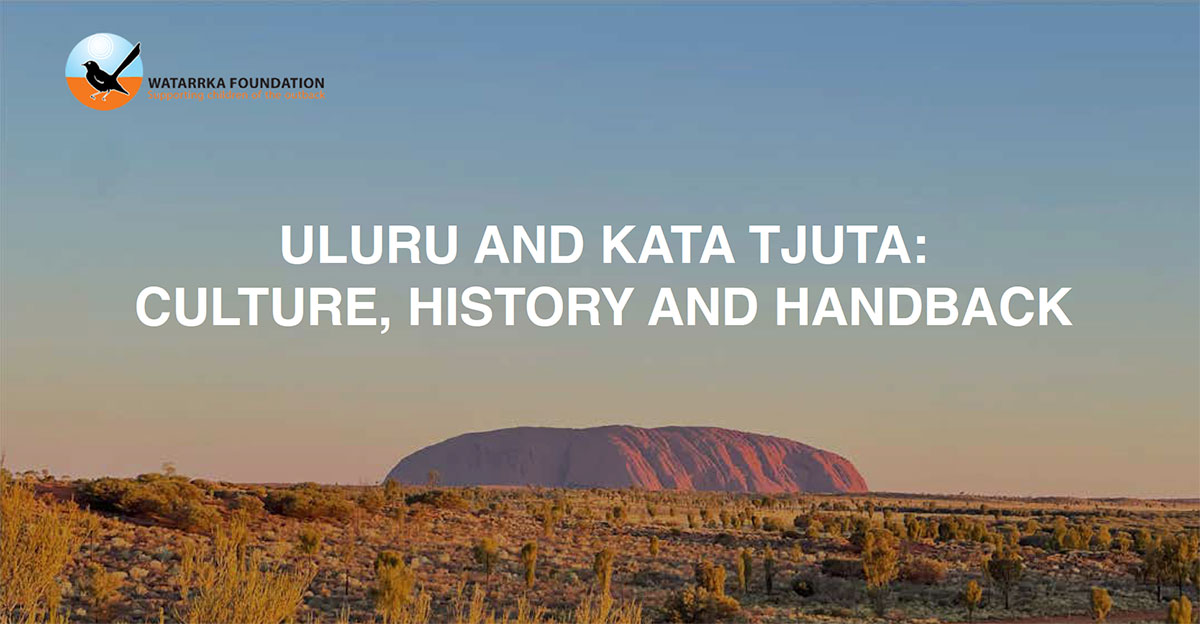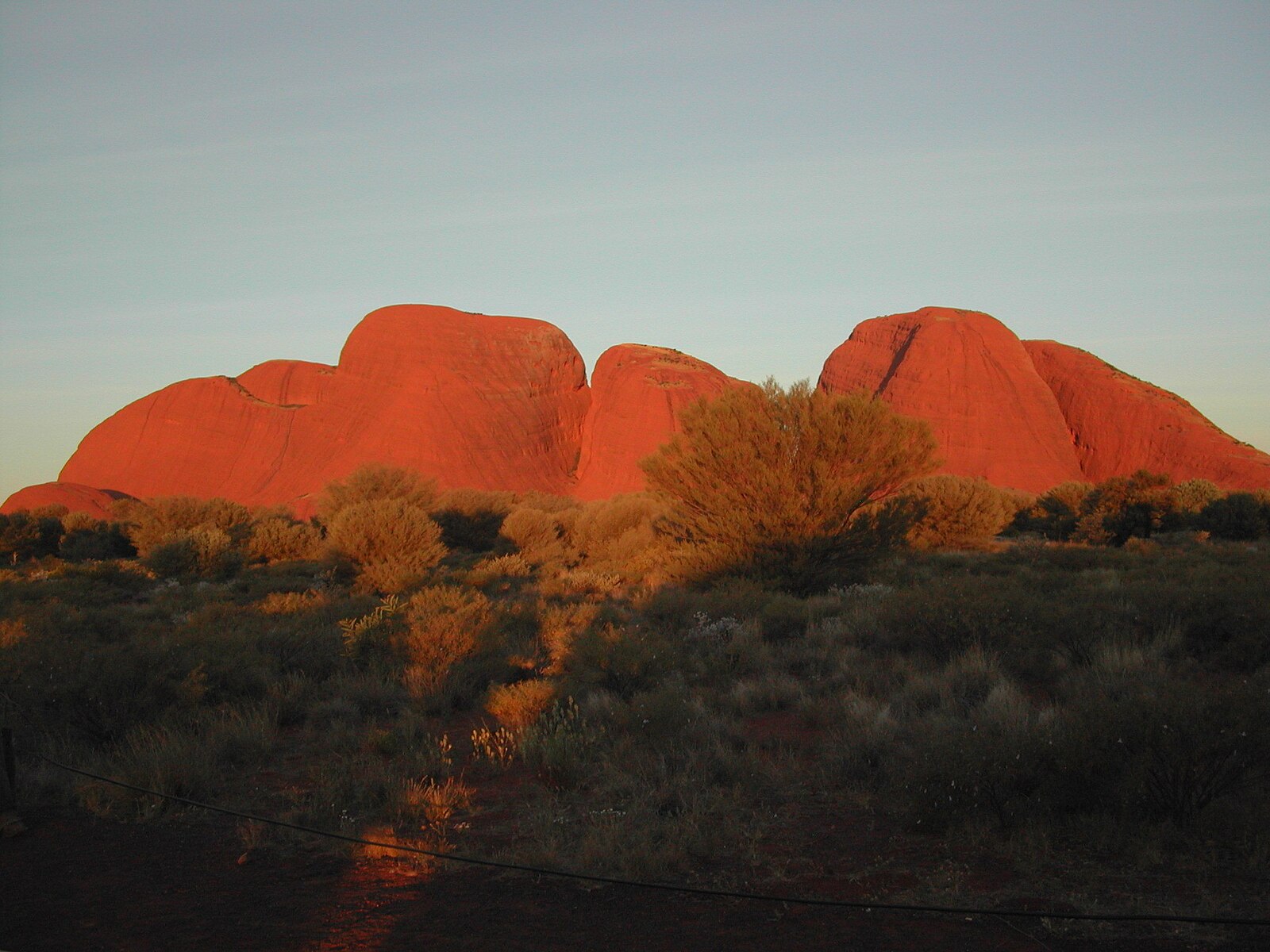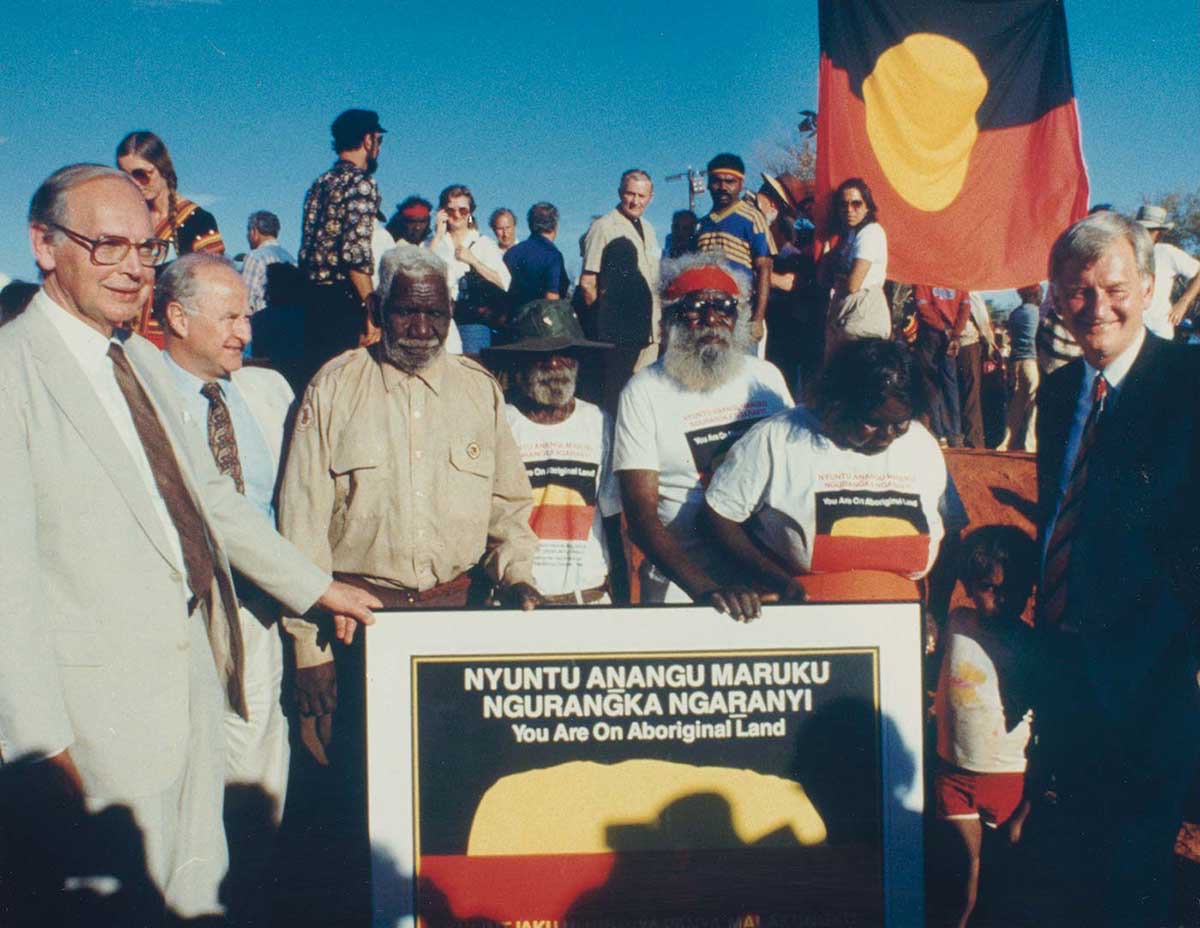
On October 26 1985, after decades of activism and lobbying, Uluru and Kata Tjuta were rightfully returned to the Anangu Traditional Owners. The Uluru-Kata Tjuta National Park is around 300km southwest of the Watarrka National Park—about 3 hours' drive—which, in the outback, is effectively next door. So, as we approach the 39th anniversary of the Uluru-Kata Tjuta handback, let's take a closer look at the cultural history of the Watarrka National Park’s iconic sandstone neighbours.
Anangu (pronounced 'arn-ahng-oo') are the Traditional Owners of Uluru and Kata Tjuta and the surrounding lands in the Central Western desert region of Australia. They have lived there for thousands of years. Anangu speak mainly Pitjantjatjara and Yankunytjatjara, which are dialects of the Western Desert language, the largest language group of Aboriginal Australia. In both Pitjantjatjara and Yankunytjatjara, Anangu means 'people'.
For Anangu, Tjukurpa (pronounced ‘chook-orr-pa’) is the Traditional Law. The meaning of Tjukurpa is deep, and much of Tjukurpa is sacred and remains with Anangu elders and is not shared with non-Aboriginal people. Tjukurpa is described as a spiritual philosophy, a moral system, and a creation period. Tjukurpa is the foundation of Anangu culture, and it is important to understand that it is not an abstract idea, but something that lives in the land, animals and people.
According to Tjukurpa, prior to creation the world was featureless until the ancestors, in the form of plants, animals and people, travelled across the land. Their iwara, meaning paths or tracks, link sacred sites that are sometimes hundreds of kilometres apart. Anangu land is mapped through the events of Tjukurpa, and Uluru and Kata Tjuta are physically inscribed with the Tjukurpa story of creation.
There is strong and powerful Aboriginal Law [Tjukurpa] in this Place [Uluru-Kata Tjuta National Park]. There are important songs and stories that we hear from our elders, and we must protect and support this important Law. There are sacred things here, and this sacred Law is very important. It was given to us by our grandfathers and grandmothers, our fathers and mothers, to hold onto in our heads and in our hearts
In Tjukurpa law, the care and protection of the lands around Uluru and Kata Tjuta are considered to be essential Anangu responsibilities.
 Kata Tjuta in the evening light, source
Kata Tjuta in the evening light, source
William Gosse was the first non-Aboriginal person to encounter Uluru. In 1873, he named the monolith Ayer's Rock, a name which remained until 1993, when it was dually renamed Ayer's Rock/Uluru. In 2002, the order of names was reversed to restore Uluru as the first name in the dual name of the site.
The first road to Uluru was built in 1948, which allowed non-Aboriginal people to begin visiting the area as tourists. In 1950, the area was declared a National Park, and in 1958, it was removed from the South West Aboriginal Reserve and the Anangu were discouraged from visiting and occupying their own land.
Inspired by the Wake Hill Walk-Off of 1966, in which Gurindji stockmen and workers initiated a strike which led to the return of a portion of their land, Anangu and Aboriginal activists lobbied the government to return Uluru and Kata Tjuta Country to the Traditional Owners. The Northern Territory government resisted these efforts, and had the land title transferred from the Commonwealth to the Territory government. Because of this transfer, the Aboriginal Land Rights (Northern Territory) Act 1976, which was the first legislation which allowed Aboriginal people to claim rights to their own land, did not apply to Uluru and Kata Tjuta because the land was not Commonwealth owned but owned by the NT government.
After decades of activism, the Uluru-Kata Tjuta National Park title was handed back to the Anangu in a ceremony held on October 26, 1985. The Anangu leased the land to the Australian National Parks and Wildlife Service (now Parks Australia), and a board of management was established with a majority of Anangu members, who continue to work with Parks Australia to jointly protect and manage the Uluru-Kata Tjuta National Park.
 Uluru-Kata Tjuta Handback ceremony on 26 October 1985, source
Uluru-Kata Tjuta Handback ceremony on 26 October 1985, source
The Uluru-Kata Tjuta National Park is a UNESCO World Heritage area for both its natural and cultural significance. Every year, more than 300,000 tourists visit the park, where they can appreciate the beauty of Uluru and Kata Tjuta and learn about the sites' cultural significance. On the 10th anniversary of the Handback, the Uluru-Kata Tjuta Cultural Centre was established, where visitors can go to learn about Anangu culture and Tjukurpa. Under the park's joint management with Anangu Traditional Owners, tourists are no longer permitted to climb Uluru as it is not respectful under Tjukurpa, and certain areas of Uluru, particularly the north-east face, are not permitted to be photographed due to their cultural sensitivity.
Most of the tourism is filtered through the small town of Yulara, which is a fairly new community which emerged to support the tourism industry and to protect the ecosystem of the park from heavy visitor traffic. In 2011, the Indigenous Land Corporation purchased Ayers Rock Resort and established the National Indigenous Training Academy at Yulara. The NITA runs market and employment training programs for young Aboriginal people with the goal of empowering a growing Indigenous workforce with a focus on the tourism and hospitality sectors.
Today, the Uluru-Kata Tjuta National Park is essential to the economy of Yulara and Central Australia. As a cultural and ecological hub, the park not only preserves the rich heritage of the Anangu but also fosters sustainable tourism that benefits both the local community and visitors seeking to connect with the iconic heart of Australia.
To learn more about Tjukurpa: https://parksaustralia.gov.au/uluru/pub/fs-tjukurpa.pdf
To learn more about the Handback: https://www.nma.gov.au/defining-moments/resources/uluru-handback-anangu & https://deadlystory.com/page/culture/history/Uluru_Handed_Back_to_Anangu_People
To learn about the geology of Uluru and Kata Tjuta: https://www.dcceew.gov.au/parks-heritage/national-parks/uluru-kata-tjuta-national-park/natural-environment/geology
To learn about Anangu language: https://www.dcceew.gov.au/sites/default/files/documents/uktnp-a4factsheet-anangulanguage-small.pdf
To support the Foundation and our projects within the Northern Territory, make a donation at www.givenow.com.au/watarrkafoundation






Copyright © 2025 All Rights Reserved | Privacy | Terms & Conditions